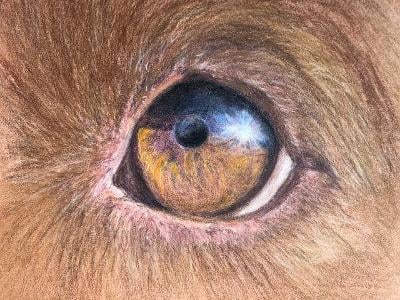Progressive Retinal Atrophy prcd
What is PRA prcd? PRA stands for Progressive Retinal Atrophy, an inherited eye disease found in Chesapeakes and in many other breeds. Chesapeakes have the form of PRA called “progressive rod-cone degeneration.” It has a late onset, generally appearing in dogs between the ages of four and seven. The first symptom of PRA is night blindness, due to the fact that the rod cells, which let the animal see in reduced light, degenerate before the cone cells, which are used for vision in good light. Dogs developing PRA may bump into things in a dim room, or be hesitant going outdoors at night. Gradually the dog will become completely blind, even in good light. Veterinary ophthalmologists can usually diagnose PRA before a dog’s owner is aware that the condition is developing. This is why it is imperative that breeding stock be checked annually by an eye specialist until age eight or nine. Since the type of PRA in Chesapeakes is of late onset, an eye clearance at age two, or three, or five does not guarantee that the dog is free of PRA.
Is it inherited? Yes
How is it inherited? PRA in Chesapeakes is inherited by an autosomal recessive gene. In order for a dog to be affected with PRA, it must inherit the causative gene from both of its parents. If a puppy inherits the gene causing PRA from only one parent, it will not have the disease, but will be a carrier with the ability to pass this gene on to its offspring, even though it doesn’t exhibit the disease. In this way the PRA gene may be “hidden” for generations, until two dogs which carry the gene are bred together and produce PRA affected offspring.
Can it be prevented? A genetic test is available to determine if your dog carries any copies of this gene. The ACC recommends that all dogs be tested for these genes prior to breeding.

